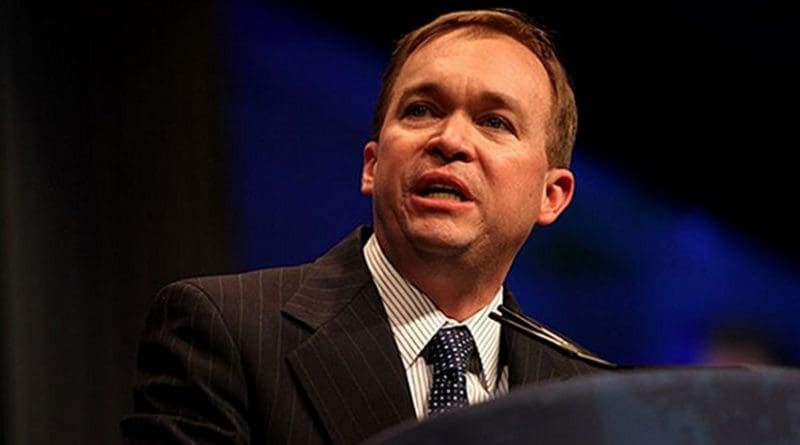Is Social Security Safe Under Trump Nominee Mulvaney? – OpEd
Is Social Security safe? President Trump’s nominee to run the Office of Management and Budget, Rep. Mick Mulvaney, sent mixed signals to that question during last week’s confirmation hearings.
On one hand, he recognizes that President Trump has made commitments to voters. At the same time the nominee assured Congress that he would advise the president to cut the federal debt and entitlement programs if confirmed as the nation’s top budget manager.
He seems to believe that spending less on Social Security will address some portion of the debt.
In terms of Social Security, the testimony conflated the issue of debt and the financial imbalances of the program. The problem is that these issues are two entirely different concepts. One deals with money that has been spent, while the other is money that is likely never going to be spent.
The federal debt is the measure of money that has been spent in the past which the government didn’t have. In the case of Social Security, the program cannot borrow money, so experts expect in 12 to 17 years that benefits will face automatic reductions. The horror here is the amount of money that will not be spent.
Cutting Social Security benefits creates zero help with the federal debt, unless Congress simultaneously diverts a portion of the 12.4 percent tax on wages to retire the debt. Repurposing funding in this manner will make the Social Security shortfall larger.
Cutting Social Security benefits does not even help with the program. The legislative benefit cuts that Mulvaney would push simply replace the ones that experts expect to occur anyway. Let’s say that Congress proposes that we cut benefits by 21 percent on retirees starting in 2034. How much do we save on the debt? Zero. The average retiree gets the same check in 2034 that he expects today.
These two facts stem from the mechanics of the program. Social Security’s has a fixed revenue base based on wages. That money flows to the old-age survivors system of Social Security, whether the system spends or not. If we cut benefits, fine. But the unspent revenue will sit in the Social Security Trust Fund waiting until needed to pay benefits.
Let’s say we reduce benefits to zero for the whole of 2017. The system generates about $900 billion in revenue. None of that money can be used to retire debt. In fact, it is by law dedicated to becoming debt.
This issue of Rep. Mulvaney’s reasoning was raised during the Greenspan Commission in 1983. That board recommended that Social Security should be moved off-budget, stating, “The National Commission believes that changes in the Social Security program should be made only for programmatic reasons, and not for purposes of balancing the budget.” Congress agreed in 1983 to move Social Security off-budget in 1990.
Off-budget means that the revenue and expense is not included in the financials of the general government. Social Security (from a budget prospective) looks more like a separate business. The reason for this change was Congress did not want excess program revenue to be mistaken for general tax revenue.
Now it seems that our nation’s top budget man wants us to make that mistake.
*Brenton Smith writes on all aspects of Social Security reform, translating the numbers and jargon of the issue into terms that everyone can understand. His work has appeared in Forbes, MarketWatch, Fox Business, The Hill, and a number of regional newspapers. This article appeared at Newsmax and is reprinted with permission.

